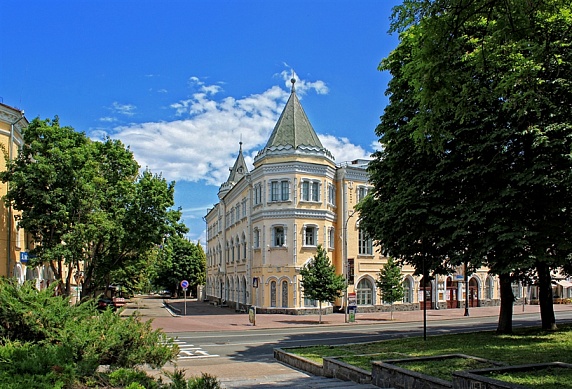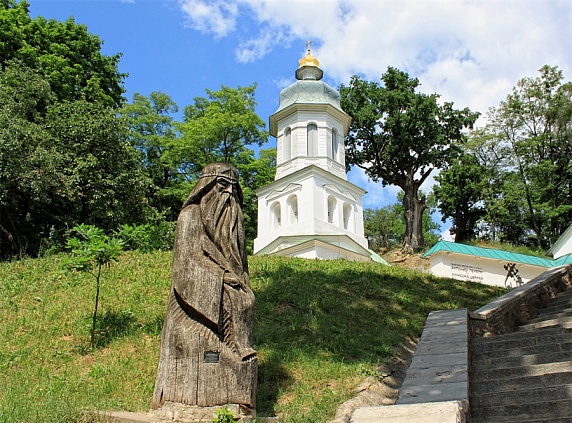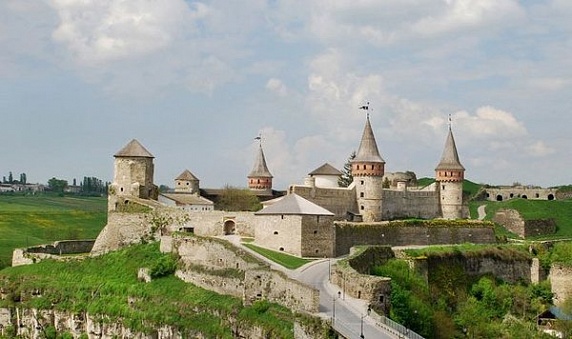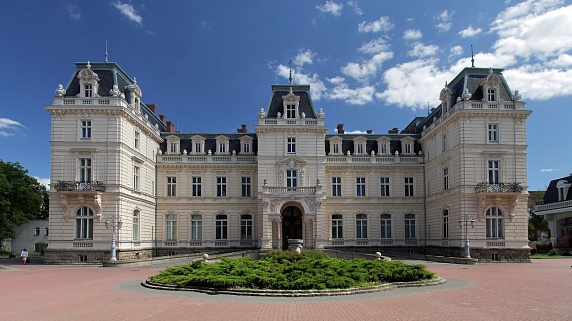 Ukraine
Ukraine
Speech by Permanent Representative of the Russian Federation to the OSCE Alexander Lukashevich at the meeting of the OSCE Permanent Council on Crimea, developments in Ukraine and the need to fulfil the Minsk agreements, Vienna, March 17, 2016
Esteemed Mr Chairman,
1. Two years ago Russia responded to the request of the overwhelming majority of Crimea’s population who expressed themselves by voting for reunification with the Russian Federation and expressing free determination. The Crimeans did this under a real threat after the violent seizure of power in Kiev, when ultra-nationalists several times tried to invade Crimea by force. All residents of the peninsula have heard the slogan of the Right Sector: “Crimea will be Ukrainian or uninhabited.”
The proclamation of independence by the Republic of Crimea and its entry into the Russian Federation are legal forms of implementing the right of the people of Crimea to self-determination in a situation where a coup d’etat involving the use of force took place in Ukraine with outside support.
Incidentally, Ukraine itself made references to the threat of a coup in the USSR in August 1991 when it proclaimed independence in the same year.
Let me state that the right to self-determination of a people, on a par with other fundamental principles of international law, is sealed in Article 1 of the UN Charter and reaffirmed in Article 1 of the 1966 Pact on Civil and Political Rights and Article 1 of the 1966 Pact on Economic, Social and Cultural Rights. The right to self-determination is one of the principles of the 1975 Helsinki Decalogue.
Developing the provisions of the UN Charter, the member-states unanimously adopted the 1970 Declaration on Principles of International Law concerning Friendly Relations and Co-operation among States in accordance with the UN Charter. This Declaration reads, in part: “The establishment of a sovereign and independent State, the free association or integration with an independent State or the emergence into any other political status freely determined by a people constitute modes of implementing the right of self-determination by that people.”
The right to self-determination has been repeatedly buttressed by resolutions of the UN General Assembly, decisions of the International Court and comments by the Human Rights Committee.
On March 16 the people of Crimea and Sevastopol celebrated the second anniversary of reunification with the rest of Russia. Now it is absolutely obvious that this historical event fully meets the will of the Crimean residents. A nation-wide referendum is the most democratic way of revealing the real aspirations and requirements of people.
We realise that many Ukrainian and Western politicians were against the decision of Crimeans and Sevastopol, whom they wanted to punish for their choice, which did not conform to the Euro-Atlantic vision of Ukraine’s future.
Kiev shut down water and electricity supplies and freight traffic to Crimea, cut off its residents from communications and is training militants for an absolutely absurd attempt to compel Crimeans to obey Kiev’s will by force.
We consider such attitude a manifestation of extreme disrespect for the residents of Crimea. Some may like their choice, while others may not. But it will have to be considered.
Incidentally, the attitudes in Europe and the United States are slowly changing in favour of accepting the new realities. I’ll quote some figures from the recent public opinion polls conducted by the large Western research companies Populus and Ifop.
When asked whether Crimea is part of Russia or not, 39 percent of Italians and 37 percent of Germans responded in the affirmative. In Britain and the Netherlands the figures were 33 percent and 32 percent, respectively, and in the US and France – 26 percent each. Americans accounted for the biggest share of “I don’t know” answers – 42 percent.
2. We are very concerned about the threat of escalated hostilities in Donbass. Consistent actions by the Ukrainian military to seize a “no-man’s land” along the demarcation line dangerously reduce the distance between the positions of the warring parties and provoke more intense clashes. Moreover, this runs counter to the Minsk Measures. The most explosive situation is shaping up near Yasinovataya. At a recent briefing with Alexander Hug, Deputy Principal Chief Monitor of the OSCE Special Monitoring Mission to Ukraine, the delegations assessed the buildup of the Ukrainian Armed Forces in Avdeyevka, the attack on Yasinovataya and damage to the civilian infrastructure in Kashtanovo.
We support the efforts of the OSCE Special Monitoring Mission and the Joint Centre for Control and Coordination to scale down tensions along the demarcation line. We are expecting that Ukrainian military units will be ordered to return to their initial positions. The attacks are jeopardising the operation of the Donetsk water treatment plant that supplies water to the entire region on both sides of the demarcation line.
We draw attention to the fact that, during the all-out March 14 attack on Zaitsevo, Ukrainian military units targeted journalists from Russian television channels and China’s Xinhua News Agency. It is impossible to explain this with friendly fire. We expect an adequate response from our colleagues who care about the rights of journalists.
OSCE Special Monitoring Mission observers have also reported the March 9 attack on the outskirts of Gorlovka and the repeated attacks on Kominternovo that have damaged residential buildings. They have also reported an artillery strike on Nikolayevka, where an elderly man was wounded on March 10 and a building destroyed, as well as strikes on the outskirts of Zaitsevo in the Donetsk People’s Republic. The mission’s reports note clearly that, in all cases, the attacks were conducted from the western sector, i.e. from the positions of Ukrainian military units.
Over the past week (March 9-15), several violations of the Minsk Complex of Measures and an addendum on the withdrawal of weapons by the Ukrainian Armed Forces were recorded. In all, 18 howitzers were recorded in Kurakovo, as well as seven howitzers in Konstantinovka, two Osa surface-to-air missile systems in Raigorodok, two anti-tank cannons in Zaitsevo, two mortars in Popasnaya and one tank in Beryozovoye. In all, three multiple-launch rocket systems, 22 howitzers, 21 mortars, 74 anti-tank cannons and 66 tanks have disappeared from Ukrainian depots. Members of the OSCE Special Monitoring Mission also note the fact that combat-ready Ukrainian military equipment is stored at depots. The howitzers have been hooked to lorries that are filled with shells.
The Ukrainian Armed Forces are installing new minefields in violation of agreements to deal with the mine threat. On March 10, observers saw Ukrainian troops unload mines near the demarcation line in the vicinity of Zolotoye village. Despite an agreement with the Contact Group on stopping practice firing sessions, the Ukrainian Armed Forces are continuing this, including in Novoaydar and Spivakovka.
In the current situation, members of the OSCE Special Monitoring Mission should continue to focus on patrolling the security zone. As a rule, weapons systems disappearing from depots are deployed to the forward edge of battle area and can be used during attacks. It is necessary to monitor the deployment of this equipment first of all.
According to SMM reports, visits to the parts of the border that are not under Kiev’s control have become regular. However, the same cannot be said about the monitoring of the Ukrainian army logistic communications. The SMM updates do not register the movement of weapons from the Zaporozhye, Kharkov and Dnepropetrovsk regions to Donbass, although this could help find a connection between the deployment of new weapons and munitions to the conflict zone and the worsening of the security situation.
We note that the nascent positive trend with the facilitation of access at the line of contact and the opening of additional checkpoints has been disrupted by Ukraine. Another checkpoint, in Luganskaya, may be closed. At the same time, Ukrainian officials point out a dramatic growth of corruption among the military controlling movement across the line of contact. It is a fact that they extort money from local residents and trucking agents. We urge SMM observers to visit checkpoints more often.
Overall, Kiev’s policy of blockading Donbass and drawing out the political process has only encouraged the strengthening of self-governments in some districts of the Donetsk and Lugansk regions. These regions’ continued isolation from Ukraine is also encouraged by the vocabulary of our Western colleagues, who call Donbass residents “separatists” and hence encourage their belief that they have to secede from Ukraine, although this is not stipulated in the Minsk Package.
A direct dialogue between Kiev, Donetsk and Lugansk is key to the settlement of the Ukrainian conflict based on the Minsk agreements, such as the territorial integrity of Ukraine and adoption of a new constitution highlighting decentralisation and with due regard for the specifics of certain areas of the Donetsk and Lugansk regions, which must be coordinated with these regions’ representatives. The external forces are to provide the necessary assistance to this process. We discuss these issues within the framework of the Normandy format and in relations with our American colleagues at different levels. We expect the OSCE to provide assistance too.
Of course, Kiev and Washington have their own preferences regarding representatives from the other side. However, Point 12 of the Minsk Package of Measures says that “questions related to local elections will be discussed and agreed upon with representatives of certain areas of the Donetsk and Lugansk regions in the framework of the Trilateral Contact Group.”
We urge our colleagues to do everything in their power to facilitate the coordination of election modalities in Donbass within the framework of the political subgroup of the Trilateral Contact Group.
The achievement of agreements on mine clearing and on banning firing exercises in the security zone is proof that progress is possible. The sides have recently held another prisoner exchange, which means that the exchange mechanism is functioning again. Several dozen hostages were released in the past few weeks. However, it is time to start implementing the principle of the Minsk Package of Measures on the exchange of all hostages and based on the principle “all for all,” as well as the provision on ensuring pardon and amnesty by enacting the law prohibiting the prosecution and punishment of persons in connection with the events that took place in certain areas of the Donetsk and Lugansk regions of Ukraine.
In conclusion, I’d like to remind you that the Ukrainian crisis can only be settled in a peaceful and political manner through the full and honest implementation of the Minsk Package of Measures as the only option.
Thank you.








